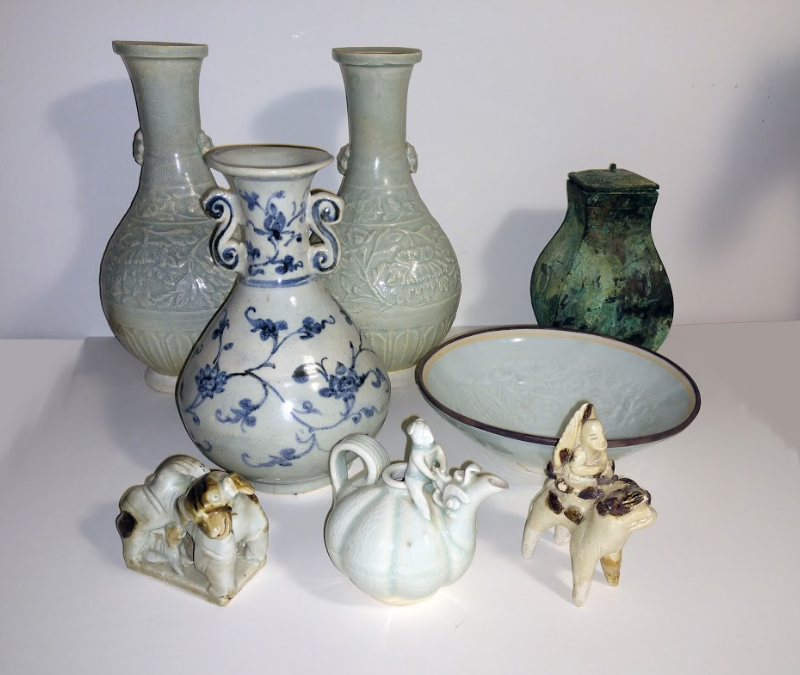Chinese, 28 sculptures and decorative arts, Ceramics, bronze, and marble

Chinese, 28 sculptures and decorative arts, Ceramics, bronze, and marble, 206 B.C.E–1279 C.E., Gift of Berthe Ladd, Class of 1958 2019.1175-2019.1202
The Davis Museum recently received a generous gift of 28 objects that greatly strengthen the museum’s collection of Chinese antiquities. The works range from the Han Dynasty (206 B.C.E-220 C.E.), Northern Qi Dynasty (550-577 C.E.), Tang Dynasty (618-907 C.E.), to the Song Dynasty (960-1279 C.E.). Ceramics comprise most of the gift, which includes two pear-shaped Yingqing vases decorated with delicate peony and lotus patterns. Yingqing, or Qingbai, denotes a bluish white glaze that was prominent during the Song Dynasty and was produced in Jingdezhen, which is still a center of porcelain production and often referred to as China’s porcelain capital. Yingqing ceramics came to represent the best of Chinese porcelain craftsmanship in the subsequent Ming and Qing dynasties. Accompanying the vases are playful and well-crafted small porcelain figurines of animals from the Song Dynasty.
The gift also includes several sancai ceramics from the Tang Dynasty. Sancai, the tri-color glaze from Tang Dynasty consisting of deep amber, yellow, and green, is one of the great artistic achievements of the period, as pottery before the Tang was mostly monochromatic. Horses and camels, seen in the three sancai sculptures, were commonly depicted in Tang pottery because of their important roles on the Silk Road. The woman rider and horse is one of the most well-known types; with her rounded cheeks, elaborate hairstyle and straight back, the figure combines a sense of valor with elegance. Tang Dynasty ceramics gained widespread renown for their fully saturated colors, vividness of the facial expressions, and exquisite craftsmanship.
In addition to ceramics, the gift also includes a rare and incredibly well-preserved Northern Qi marble bodhisattva figure with intricately carved adornments and serene facial expression, as well as an ancient bronze Fang Hu from the Han Dynasty, a vessel believed to be used as a ritual container for the storage of wine.